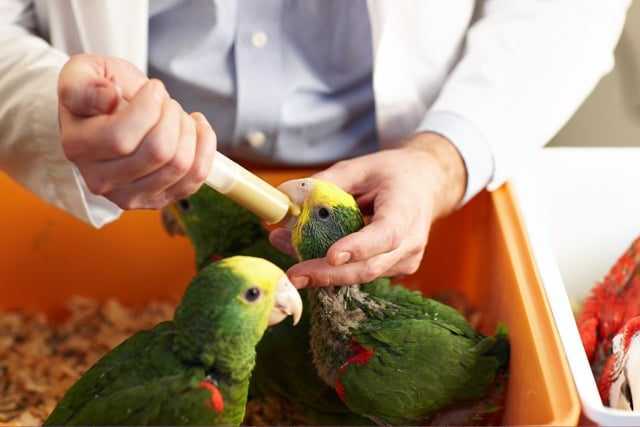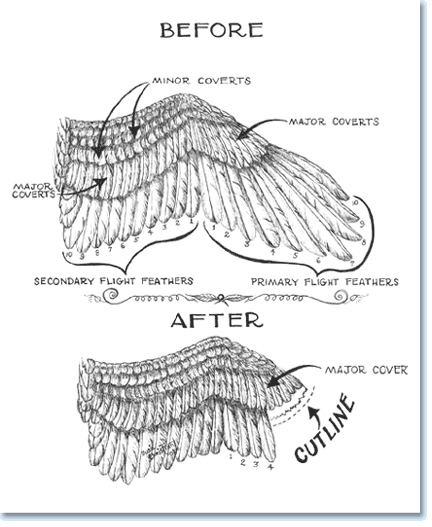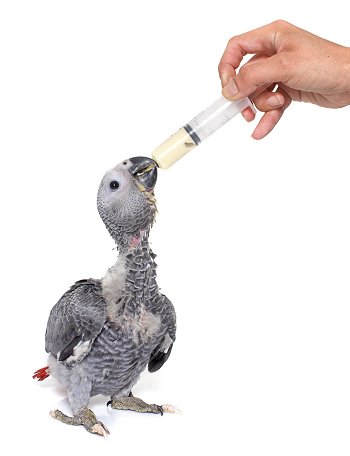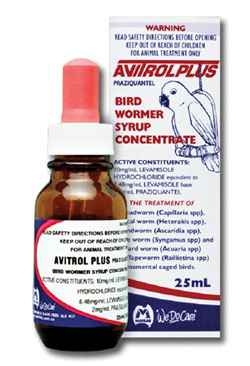Contents
When it comes to adopting birds, there seems to be a lot of misinformation and flat-out lies among the bird breeding and selling community. Mostly, this is because those who purchase birds are usually relatively inexperienced and lack the knowledge of birds they require to avoid these scams. This is unfortunate, as a first-time bird-keeper’s experience with their new bird can completely make or break their interest in and perception of birds as pets.
Therefore, whether you’re a first-time owner or an avian enthusiast, it is vital you know about these common scams and how to avoid them.

Hand-Reared, Aviary and Tamed
Hand-Reared Birds
The scams I see most often by far among sellers usually relate to ‘hand-raised’ birds.
A ‘hand-reared’ bird is one that has been taken from the nest, usually between 2-3 weeks of age, and has been hand-fed and cared for by human owners until it is fully weaned onto solid foods. These types of birds are commonly sought-after by owners who are wanting an inside-bird, as hand-reared birds will have a low immunity and are susceptible to catching diseases if kept outdoors.
The types of birds commonly hand-reared include cockatiels and other larger parrots.
These types of birds can also fetch quite a high price, with macaws often costing $5,000 or more.

Tamed Birds
A ‘tamed’ bird is one that has either been parent-reared and tamed by human owners by spending a significant amount of time with the bird, or has been hand-reared and is used to the company of humans.
Birds that have been commonly tamed usually include cockatiels and larger parrots, as well as occasionally budgies and smaller bird breeds.
These birds are again heavily sought-after by people who want an interactive pet.

Aviary Birds
An ‘aviary’ bird is a bird that has either been parent-reared (reared by its bird parents), or may have some past of hand-rearing or co-parenting (fed by human and bird parents) but have not been handled for a long period of time. These birds will not be tame, will often hiss or bite, and will become distressed around humans. These types of birds are usually kept outdoors and may be used for breeding purposes.
Any bird can be an aviary bird, but there are some species that are more commonly kept as aviary birds – such as canaries, finches and budgies – due to their small size and hyperactive lifestyles, which makes them difficult to tame or hand-rear.

What Does a Tame Hand-Reared Bird Look Like?
I personally breed cockatiels that I would classify as being both ‘tamed’ and ‘hand-reared’. They are hand-reared because I have taken them out of the nest all around the age of 2-3 weeks (one at the age of about 5 days due to stunting complications) and have cared for them and hand-fed them until they were able to eat solid foods themselves and were no longer begging for formula. They are also tamed as I have spent a significant amount of time handling them, sitting them on my shoulder and, when they’d started flying, letting them out to fly around the house (for at least 2 hours a day) to play with myself and my family. Due to all of this time spent with them, they are easy to handle, will very often land on myself and my family members, spend a lot of time sitting on my shoulders and fiddling with my jewelry, and are generally very clingy and affectionate with people.
Hand-Reared VS Tamed
The most common issue with hand-reared cockatiels, however, is that breeders do not spend this quality time with their birds. Many breeders, especially those responsible for large breeding operations, will simply take birds out to hand-feed and place them back as soon as feeding has finished. The birds will be dependent on the hand-rearing, but may be more attached to the spoon, syringe or feeding-tube than they will to the actual breeder, as the breeder doesn’t spend much time giving the youngster warmth and affection like a mother bird naturally would. Some breeders may not even handle the birds during feedings and simply open the brooder (make-shift nest to keep a baby bird warm), feed the chick, and close the brooder up again.
This type of hand-rearing has unfortunately become quite popular and has resulted in very confused bird-adopters. A hand-reared bird was guaranteed to be tame a few years ago; now a hand-reared bird can be just as disconnected from humans as an aviary bird. Not to mention, these types of untamed birds are still being sold at the same price as all other types of hand-reared birds, with a cockatiel costing up to $250AU – a high price knowing you could simply purchase a $20 cockatiel and still have the same luck taming it.

Hand-Reared VS Hand-Fed
Many breeders will also distort the term ‘hand-fed’. In normal bird-breeding circles, a hand-fed bird is one that has been hand-reared and fed formula from a young age. However, I’ve also found a large amount of breeders stating their birds are hand-fed only to later disclose that the bird is ‘able to be fed seeds out of human hands’. This may indicate a bird’s proclivity towards tameness, but is nowhere near the tameness of a hand-reared and tamed bird. Budgies are especially known for eating out of owner’s hands due to their generally ‘gutsy’ nature when it comes to food, but this alone certainly doesn’t mean they’ve been ‘hand-tamed’ or ‘hand-fed’ birds. I’ve even seen adds stating that a bird will ‘eat out of your hand if you don’t feed it for a while’, which would be true for pretty much any starving animal.

Avoiding the Pitfalls
The best thing to do when adopting any animal is to request to see it in person before you purchase it. Any legitimate breeder will be more than happy to organise a meet-and-greet between you and your potential pet, and provide you with the information necessary to keep it. A breeder ignoring or turning down this request will be an obvious red flag that something isn’t quite right, and that it’d likely the breeder isn’t being truthful about the bird they are selling.

Before you begin looking for a potential adoptee, you should also ensure you have a good knowledge of what a tame, aviary and hand-reared bird of your chosen bird species looks like, as not all birds are the same in terms of how they act. For example, a tame cockatiel will be able to comfortably sit on your shoulder for long periods of time while you’re walking around the house, whereas the ‘flighty’ nature of a tame budgie would mean it’d be unlikely be able to do this.
Breeders who falsely sell ‘tame’ or ‘hand-reared’ birds will usually have been doing it for a long time and will prey on the inexperienced or ill-informed, so it is important to go in with your own research at hand.

If you’re looking for a hand-reared bird, make sure to ask specific questions relating to its upbringing, such as ‘when was it pulled from the nest’ (should be between 2-3 weeks), ‘what was it fed’ (should be formula fed – usually Vetafarm or Passwell foods in Victoria, Australia – via spoon, syringe or crop-tube) and ‘when was it weaned onto solid foods’ (should be between 8-10 weeks, sometimes longer). A true hand-rearer will have no issue answering these questions, whereas a person falsely advertising a hand-reared bird will likely not know the answers.
Video Examples
Wing Clipping VS Tameness
When I began to breed and keep young cockatiels, I was always shocked to see how calm other birds in pet stores seemed to be. My babies were constant rug-rats – flying around the house and banding together to destroy everything I owned – whereas cockatiels of the same age in pet stores seemed to be incredibly docile, hanging around their parrot-stands even though they were out of their cages and had free-range of the pet store. It wasn’t until a few months later that I finally realised the reason they were so tame compared to my own cockatiels was because their wings were clipped.

The idea of clipping a bird’s wings to give off the impression that they’re tamer than they may actually be is by no means a new one. In fact, most bird stores clip the wings of birds that are being sold as either ‘tamed’ or ‘hand-reared’. This is done so the bird is unable to potential adopters can handle the bird, as they are unable to fly away, appearing to validate the bird’s ‘friendliness’. However, once you get these birds home, you’ll quickly realise the difference between a bird that has simply had its wings clipped and a tamed bird.
Most birds, especially smaller parrots and birds such as cockatiels and budgies, are regarded as ‘prey items’ to the larger predators and must therefore rely completely on their ‘flight-or-fight’ response to keep them safe. When a predator comes along, their first defence is to fly to safety, but when they no longer have this option, they must resort to defensive behaviour. Even though there are unlikely to be predators in your home, your bird will still naturally become flustered by noises, sudden movements and other items it may find frightening. A bird that cannot fly will, therefore, be naturally defensive and prone to hissing and biting, making it very much the opposite of a friendly bird. Clipped birds, due to the stress of not being able to naturally fly from place-to-place, will also be very prone to cardiac and respiratory issues, especially heart-attacks.
A tamed bird should be friendly without needing its wings clipped. Once it gets used to you, it should be easy to handle and place back in its cage when need be, eliminating the need for wing-clipping. In fact, a tamed unclipped bird is likely to be far friendlier than a tamed clipped bird, as its freedom to come to you, as well as its choice to fly away and find safety when it deems necessary, will increase its trust in both you and its surroundings.

Avoiding the Pitfalls
To avoid purchasing a falsely ‘tamed’ bird, it is usually better to purchase a bird that is not advertised as having its wings clipped. If you’re unsure as to whether it has had its wings clipped or not ask the breeder or take a look at its wings when they are spread to see if you can identify the key missing feathers that may have been cut.
If you deem it necessary to clip your bird’s wings (only recommended for birds that have illnesses where flight must be prevented), ensure you approach an avian vet to do this for you, as it is easy to cut through flesh or pin feathers and cause fatal bleeding if you are inexperienced.
Weaning and Age-of-Sale
The term ‘weaning’ refers to the process of a bird going from eating purely formula or being purely parent-fed, to being able to eat solid foods on its own. A fully weaned bird will no longer require any form of hand-feeding or parent-feeding, and will be able to eat on its own without any parental help.
In most countries, the sale of an unweaned bird is illegal. However, there are still many breeders who engage in the illegal sales of birds who are still heavily dependent. This is not only bad for the bird – as changes in formula type can be dangerous and an inexperienced owner with a different routine or feeding schedule could easily kill the bird – but is also incredibly time consuming, expensive and stressful for the bird owner. The bird doesn’t just require feeding, it requires heating, weighing throughout the day, the food’s temperature must be constantly taken before feeding, the food must be the correct consistency and the chick itself must be checked for any signs of illness or deficiency to be corrected. Bird chicks are incredibly vulnerable to illness, and without proper sterilisation of all feeding tools and knowledge of symptoms, chicks can go from being fine one hour and dead the next.

Avoiding the Pitfalls
The number-one way to avoid purchasing an unweaned bird is to check the average weaning ages of your breed of bird.
| Parrot Type | Average Weaning Age | Parrot Type | Average Weaning Age |
| Cockatiels | 7-10 weeks | Eclectus | 12-14 weeks |
| Budgies | 5-7 weeks | Lovebirds | 8-10 weeks |
| Conures | 8-12 weeks | African Greys | 12-14 weeks |
| Quakers | 8-10 weeks | Amazons | 12-16 weeks |
| Parrotlets | 8-10 weeks | Indian Ringnecks | 10-13 weeks |
| Lorikeets | 5-8 weeks | Caiques | 13-14 weeks |
| Galahs | 12-17 weeks | Alexandrines | 12-14 weeks |
| Macaws | 15-24 weeks | Turquoisines | 8-9 weeks |
| Bourkes | 3-5 weeks | Scarlets | 7-8 weeks |
| Hooded Parrots | 6-8 weeks | Sulphur-Crested Cockatoos | 12-18 weeks |
| Red/Yellow/White-Tailed Black Cockatoos | 17-22 weeks | Umbrella Cockatoos | 16-17 weeks |
| Red Rumps | 7-8 weeks | Princess Parrots | 8-10 weeks |
Keep an eye out for ‘hungry-baby’ behaviours, such as head bobbing, ‘static-sounding’ begging, weight loss and refusal to eat solid foods. If you adopt a bird and discover that it’s displaying these behaviours, attempt to either contact the breeder – who should take the chick back and hand-rear it until it is able to be independent – or contact an avian vet, who should be able to show you how to hand-feed the bird correctly.
Vaccinations, Worming and Mites
In Australia, there are currently no vaccines available for parrots. Worming sprays and liquids that are able to be mixed into drinking water are available from pet-stores, but mustn’t be given to a bird until they have been fully weaned due to the damage the medication can do to a bird’s crop. Treatment for mites is also readily available at pet stores but is only able to be given to birds once they have already contracted mites.
Still, there are many Australian bird-sellers who sell their birds at a high price, proclaiming they have been ‘fully vaccinated, wormed and mite-treated’.
Avoiding the Pitfalls
Avoiding this pitfall is relatively easy. Simply read through the description of the bird being sold and avoid purchasing from any breeders that falsely claim their birds have been vaccinated. If they claim their birds have been wormed, check the age of the bird first and ask the breeder to tell you what type and brand of worming medication was used, as changes to medications can cause illness in some birds.
If a breeder claims a bird has been ‘mite-treated’, this may mean the breeder is either making up false claims, or it may indicate something is not quite right with the birds the breeder is selling. As stated above, a bird must already have mites present to be ‘mite-treated’, so it’s possible the bird may already have and is being treated for this condition at the time of sale. This may be a problem for you as an adopter, especially if you have other birds at home, due to the very contagious nature of mites. You should, therefore, avoid any birds that are supposedly ‘mite-treated’, or discuss the issue of mites should they be present in the bird and how to treat them yourself.
Over-pricing and Under-pricing
Something else you should be familiar with before you look to purchase a new bird is the common pricing for that type of bird. When you are searching for birds via online marketplaces, it is not unusual to find an exceptionally cheap bird, and it’s certainly not unusual to be tempted by this. However, it is important to note why this bird may have been placed at such a low price.
For example, a breeder may have little experience in the industry and may not be familiar with the usual pricing of that species of bird. This may not necessarily be a bad thing, as many slip-ups occur with first-time breeders, but the fact that this breeder may not be familiar with common breeding habits and terminology must also be taken into account. They may confuse the term ‘hand-fed’ – usually meaning a bird has been taken from the nest and fed formula – to mean a bird that eats seed out of human hands, for instance, making a high price unreasonable and a new owner potentially disappointed.
An exceptionally low price may mean the bird is ill, is not being kept by knowledgeable owners or breeders, or that the owner does not particularly care for the bird and wants a ‘quick-sell’. This may lead to the adoption of sick, malnourished, and generally uncared for birds that will need veterinary assistance to get their health back on track.
An exceptionally highly priced bird may mean an exceptionally tame and friendly bird, but it may also be a tactic to give this impression and trick others into paying a high price. You will often find that these expensive birds will be sold by breeders claiming they are fully vaccinated, wormed and mite-treated. They are also commonly found in pet stores, as the stores themselves must up the price to make back the money they’ve spent purchasing the bird from the breeder, as well as make extra money to support the store.
Avoiding the Pitfalls
Make yourself familiar with the common adoption fees for the type of bird you are purchasing. If a breeder or seller is selling a bird at a higher or lower than average price, query this and see if there is any particular reason for the price drop or rise. Any genuine seller should have no issue answering these types of questions.
Pet Stores VS Breeders
Although there is no guaranteed right or wrong answer, pet store vs breeder purchasing has become quite the controversy.
Pet stores, although they usually have the most consistent range of birds, are beginning to get a negative wrap among bird owners. Many stores overstock birds and keep a large amount of each species together in small cages – causing fighting, the spread of illness and stress – and enclosures are rarely cleaned. Pet store workers themselves often lack the knowledge they need to effectively sell birds and may confuse males and females, the ages of the birds and understate the bird’s requirements to make a sale. This is not an insult to pet store workers, as it is usually a lack of sufficient training, intense focus on making sales and reaching KPI’s, and general disinterest in the well-being of animals from store managers or owners that is the issue. Unfortunately, pet stores are also well known for selling falsely ‘hand-reared’ birds due to their higher selling price, or lack of knowledge during the original purchase of the birds from breeders, leading to breeders taking advantage of gullible store-persons.
Breeders, however, certainly aren’t innocent in this context either. Many breeders, especially those breeding a high volume of birds, will keep them in small, overcrowded cages with an insufficient diet and will sell younger, barely-weaned birds to get them out of the way to allow for newly bred ‘stock’. Breeders who sell their birds online via online marketplaces are especially known for tricking vulnerable adopters into thinking they are purchasing hand-reared or tamed birds when they may actually be purchasing an aviary bird. Many breeders will sell ill or mite-infested birds without hesitation and will not make any attempt to inform new owners of a possible disease, whether that be due to lack of knowledge or lying.
Avoiding the Pitfalls
Make sure you are aware of the kind of home your bird comes from before purchasing it. If the bird is being sold in a pet-store – especially if it is being advertised as hand-raised – ask salespeople about the bird’s original breeders. If you are concerned and believe the bird is being falsely sold as hand-reared, see if you can get into contact with the original breeders through the pet store. (Note that a bird, tamed or not, may be stressed by its new environment and may be too stressed to show affection during its time at the pet store or the first few days at its new home, so simply seeing if it’s tame in the store will likely not be effective.)
Request to see a bird in person before you purchase it through a breeder. A genuine breeder should have no problem with this, so any issues with it will be a big red flag.
Have a look at the bird’s overall condition. Does it appear to be healthy and happy? Has it been kept well by the breeder? What do the bird’s parents and siblings look like? I personally put together an ‘About Me’ booklet for every hand-reared bird I adopt out which contains photographs of the bird’s parents, siblings, general information about the bird and photographs of the bird as a youngster. This helps potential adopters to ensure the validity of the hand-rearing claims, as well as assists with later breeding and mate-selection, should it occur. You may wish to request similar photographs or information.

References
https://petcentral.chewy.com/what-is-the-average-bird-weaning-age-range/
https://www.beautyofbirds.com/weaning.html
https://www.kaytee.com/learn-care/ask-the-pet-bird-experts/bird-weaning
http://www.parrotforums.com/questions-answers/11626-how-long-does-take-wean-indian-ringneck.html
https://nswfmpa.org/Husbandry%20Manuals/Published%20Manuals/Aves/Princess%20Parrot.pdf











:max_bytes(150000):strip_icc()/GettyImages-178859833-5c6d836dc9e77c0001b506a4.jpg)

Leave a comment